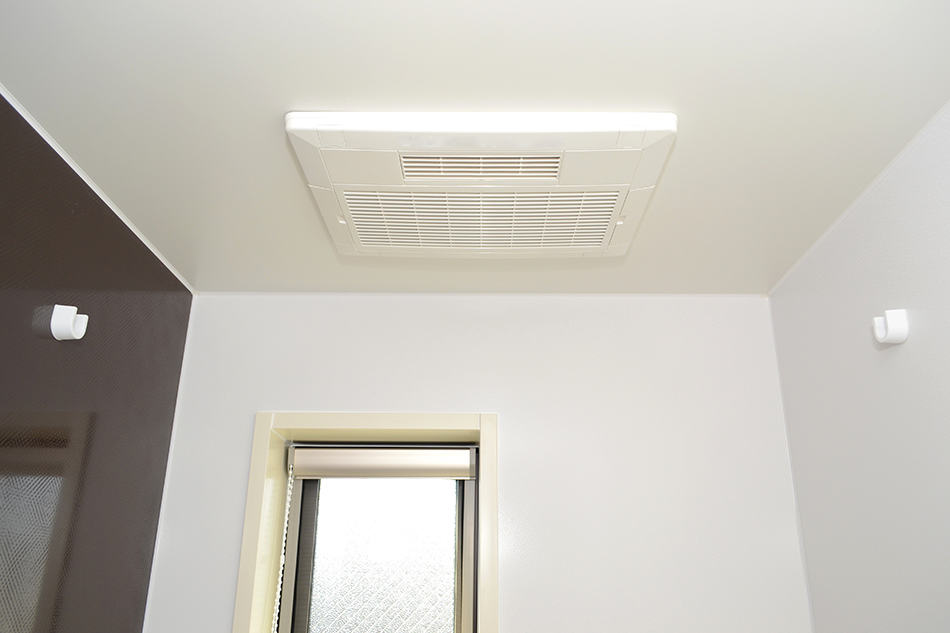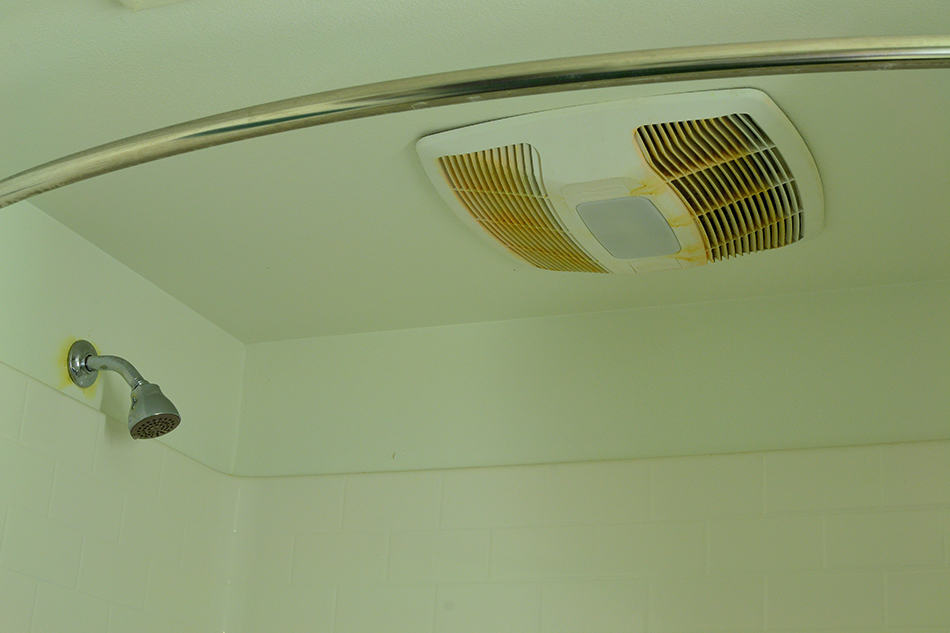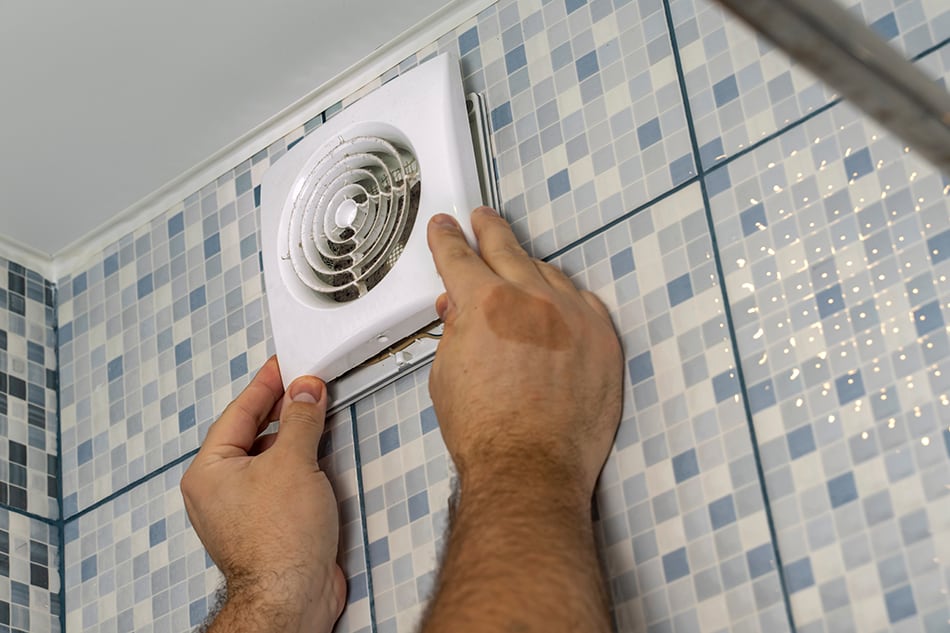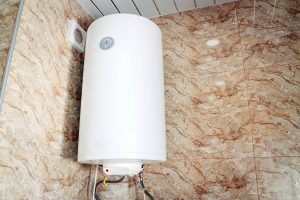Water leaking from your bathroom exhaust fan may be one of the first signs you get that you’re facing a bigger problem. You may notice that the leaking is even more pronounced when it rains or as the ice thaws in spring.
Your best bet is to get to the bottom of what is causing the problem and resolve it fast. If left unattended, leaks can be bad news. They can lead to wood damage, mold growth, and foul odors. This can attract vermin and pose other health and sanitation problems due to the poorer air quality.
Let’s take a look at some of the reasons why your bathroom exhaust fan may be leaking.
Condensation Build-Up
One of the primary reasons for a leak in your bathroom’s exhaust fan is a build-up of condensation in the ductwork. When the warm steam rises from your bathroom after a hot shower or bath, it meets the cooler air in your attic or outside as it exits, forming condensation.
If there’s also excess moisture in your ducts, then too much condensation can occur, and the water droplets come back through the exhaust fan. There are many reasons why water could be backing up in the ductwork. Some of these include poor insulation throughout your house, A/C pipes that sweat when they are in use and extra cold during summer, and rain entering through a leaking roof.
Solutions to too much condensation in your ductwork
Have a look at the dampers. There are two dampers on a bathroom exhaust fan – one in the fan housing and another venting to the outside. Dampers are flaps that open when warm air vents out of your bathroom while stopping cold air from the outside from coming in.
The flaps fit pretty loosely, so a foam ring seal is added to limit air from seeping in or out when the flap is closed. Check that the damper flaps are not always open and that there isn’t any damage to the seal. If the damper or seal is not working correctly, you should replace the flaps.
Check the position of the fan. Most times, the fan is located directly above the shower or bathtub. This seems logical because the hot air and steam have the shortest route to travel before being exhausted. However, this means the air is at its hottest as it enters the cold ventilation pipes, and condensation is more likely to occur. Moving the fan to another location in your bathroom, further away from the bath or shower, gives the air more time to cool.
If your fan is too weak, change it. Your bathroom fan may simply be too weak to suck the warm air out of your bathroom. If your bathroom is more than 100 square feet or has a roof height of more than 8 feet, or you and your family take lots of steamy showers and your fan doesn’t seem to be coping, you’ll need to get a more powerful fan.
Run the fan for longer. Granted, the drone of a bathroom exhaust fan can be irritating. But it’s essential to let it run when you’re bathing or showering and keep it going for at least another 10-15 minutes to ensure that all the moist air is removed.
Water May Be Leaking In from the Roof
Heavy rainfall and melting snow can dump plenty of water on your roof, which can become the source of leaks coming into your house. Usually, your roof’s vapor barrier and house insulation should prevent water from dripping in.
Still, if it’s poorly installed or defective, pools of water can form and find their way into the ducts. When you see dripping from your bathroom vent, and you’re sure the dampers and fan aren’t the problem, a leak from the roof could be the culprit.
Solutions to a Leaky Roof
Check for any damage in the roofing material: Your roof should be checked from the exterior for any damage. You can do this yourself (be extra careful) or hire a professional to do the job. Shingles or metal are popular types of roofing materials. Each performs differently in terms of energy efficiency, durability, and ability to withstand harsh weather.
Generally, metal roofs perform better in regions that experience severe weather conditions, like heavy rain, snow, and ice. But, shingles are not as costly to install. When checking a metal roof, look for corrosion, rust, and holes from hailstones. Damage to a shingle roof is at times not immediately visible, so you may have to feel for soft spots on the roof’s surface area to figure out where the leak originates.
Check your insulation: An attic that is significantly colder than other spaces in your home creates the perfect conditions for condensation to form. Water leaking out of your bathroom fan may be a sign of insufficient insulation. It’s wise to have the roof and attic inspected to see if air leakages can be closed off with additional insulation layers.
Check for moisture problems elsewhere in your home. If water leaks into your house from your bathroom exhaust fan and from other areas in your house after it’s rained, then the problem is more general in nature.
A home that always feels humid, or has a persistent musty smell, is a clear indication to check insulation everywhere. A home dehumidifier is an excellent system for regulating the humidity level in your home, removing just enough excess moisture to achieve an ideal balance.
In Conclusion
It could be alarming to see water dripping from your bathroom exhaust fan. But if you don’t see the issue in other areas, you don’t have too much to worry about.
If you’re skilled at DIY, you can find ways to reduce the condensation build-up that’s probably causing the leak. However, if the drips are happening throughout your home and you see signs of mold, it’s essential to seek out the assistance of a ductwork specialist.








